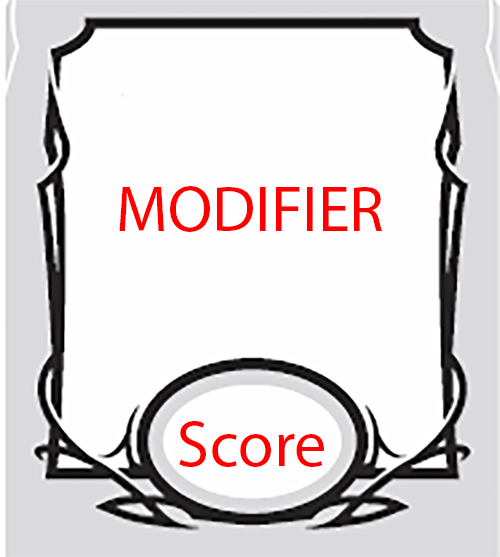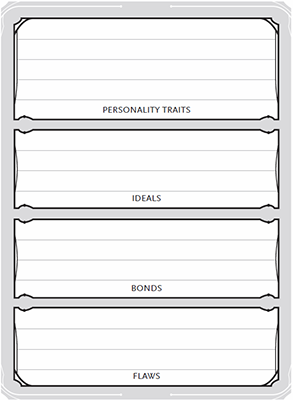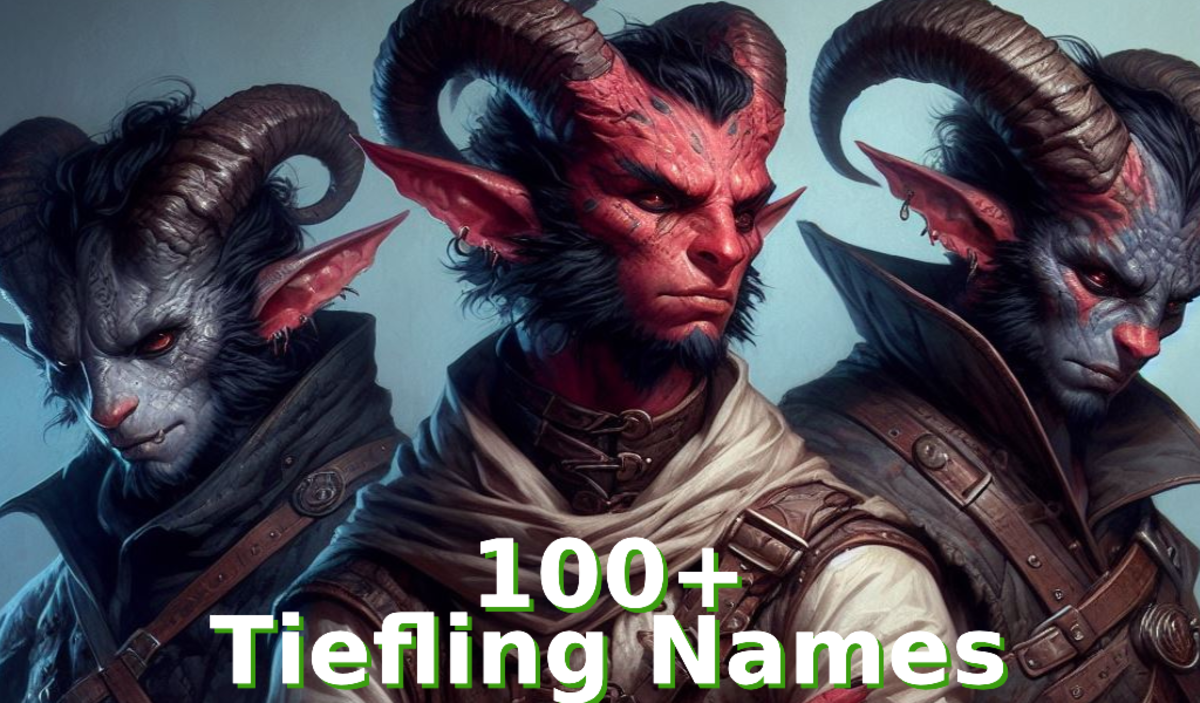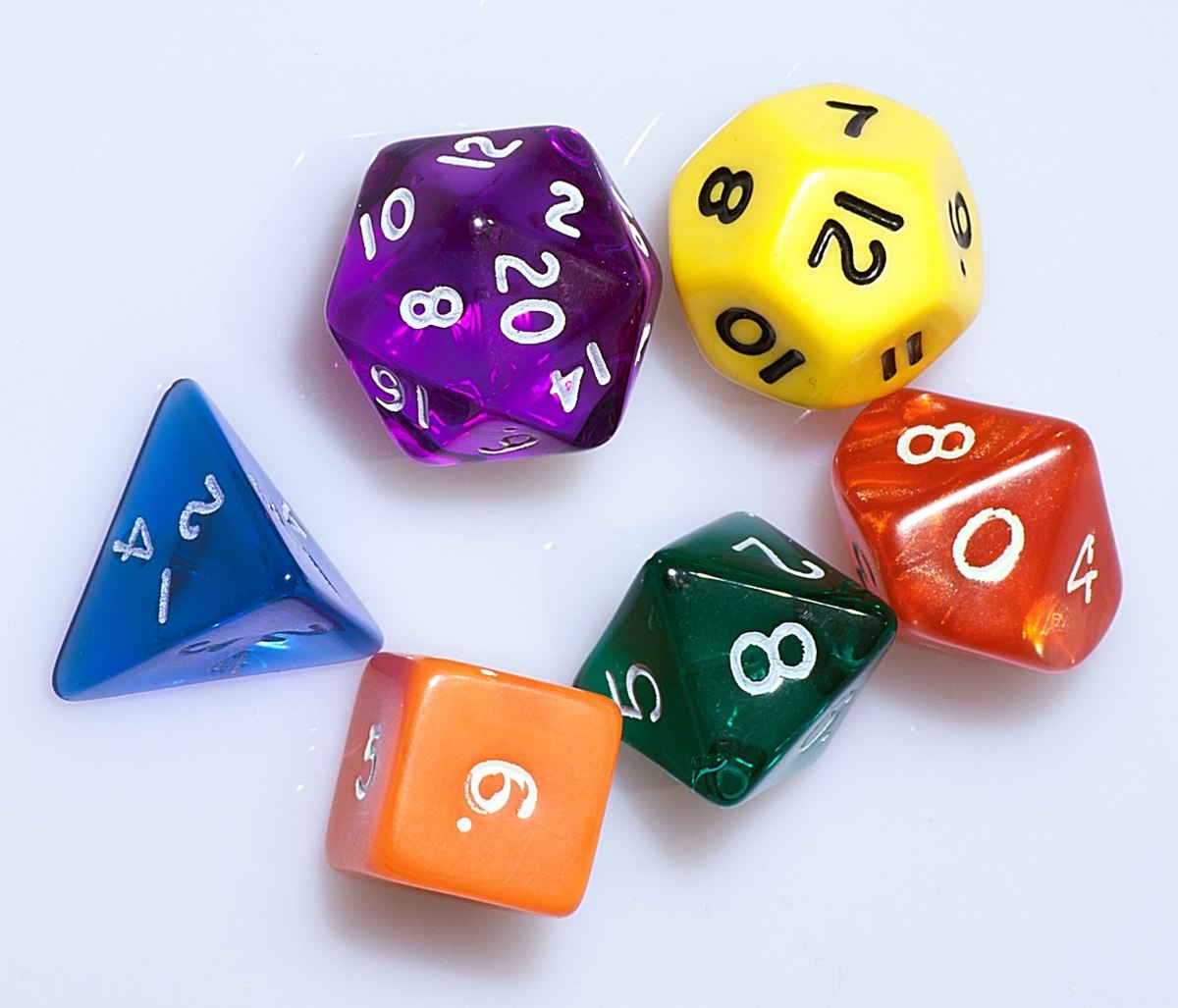Dungeons and Dragons 5e: Character Creation How-to
Player Experience
What is your experience with D&D or other tabletop RPGs?
Getting the Rules
There are a few sources for obtaining the rules for D&D 5e, one of which is absolutely free!
Basic Rules
The Basic Rules are free to download and are being updated by Wizards of the Coast, or WatC (pronounced What-See). The current version of these rules is V2, and is available at http://dnd.wizards.com/articles/features/basicrules. The Basic Rules contains all of the basic rules for role playing and resolving actions and combat, as well as rules for creating and advancing the core 4 character classes (Fighter, Rogue, Cleric, Wizard) and the core 4 character races (Human, Elf, Dwarf, Halfling). As a player, all you will need is the Player's D&D Basic Rules.
D&D 5e Starter Set
The Starter Set contains a good portion of the first version of the Basic Rules, five pre-made characters (pregens), and a large adventure that will take characters from level 1 to level 5 and will last for several weeks depending on play times. You can find the D&D 5e Starter Set at a friendly local game store (FLGS), or online retailers like Amazon. In order to keep the hobby alive, it's preferred that you purchase from an FLGS, but online retailers can be cheaper. One benefit from purchasing from FLGS is that you can often times get products a week or two before everyone else!
Core Rules: Player's Handbook (PHB)
The Player's Handbook, often referred to as the PHB, is the full resource for playing - and to an extent running - D&D 5e gaming sessions. It contains 9 character races (including the 4 from the Basic Rules) as well as 12 character classes (including the 4 from the Basic Rules). It also has an expanded list of spells for each of the spellcasting classes and ways to further customize your character. Like the D&D 5e Starter Set, the Player's Handbook can be purchased from an FLGS or an online retailer.
Character Creation Steps
There are several steps involved in creating your character, and each step gets applied on top of the others. These are the steps in an order that I suggest, your Dungeon Master may prefer you use a different order.
- Determine base ability scores.
- Choose your race and apply ability score bonuses as well as proficiencies, special abilities, and equipment.
- Choose your character's background and apply proficiencies and equipment.
- Choose your character's class and apply proficiencies, special abilities, and equipment.
- Fill in the remaining details to complete your character.
Basic Breakdown: Ability Scores
Your character's capabilities are represented by six ability scores: Strength, Dexterity, Constitution, Intelligence, Wisdom, and Charisma. Based on who is running the game - the Dungeon Master (DM) - you may either assign a standard set of values, or you may "purchase" your character's ability scores with a point-buy system, or you may be asked to roll certain dice and add the results together.
Your character's race will increase some of your ability scores. The higher your ability score, the higher your modifier will be which will help your character to successfully attempt actions during the game.
On the official character sheet, your ability score values are located in the upper left corner and is entered into a box with an oval at the bottom. Even though you can enter the value in either, most place the ability score in the oval. The modifier you gain for the ability score will go into the box area.
Strength
Strength is a reflection of your character's physical prowess, such as your ability to lift and carry things, break down doors or bend bars, and also affects melee (hand-to-hand) combat. This is the primary ability score for Barbarians, Fighters focused on brute force, and Paladins.
Dexterity
Dexterity is a reflection of how quick and graceful your character is and effects things such as moving quietly and removing things without being caught. It also effects your defense in combat. This is the primary ability score for Fighters focused on ranged attacks and quick strikes, Monks, Rangers, and Rogues.
Constitution
Constitution is a reflection of how healthy your character is. The higher your Constitution score, the more health (HP) your character will have the easier it will be for your character to avoid sickness.
Intelligence
Intelligence is a reflection of your character's ability to find and retain information and then recall it as needed. This is the primary ability score for Wizards and applies to their spellcasting capabilities.
Wisdom
Wisdom is a reflection of common sense and perceptiveness and in some cases piety. This is the primary ability score for Clerics and Druids.
Charisma
Charisma is a reflection of your character's social capabilities and how you are perceived by others. This is the primary ability score for Bards, Sorcerers, and Warlocks.
Ability Score Block

Proficiencies and the Character Sheet
As you select your character's race, class, and background, you will pick skills that your character is proficient in. You denote this on your character sheet by coloring in the circle to the left of the saving throw or skill.
Basic Breakdown: The Races
You have several races with sub-races that you can choose from. You apply all benefits from both the main race and the sub-race to build your completed racial characteristics.
For a beginner, this can be an overwhelming experience! Here is a rough overview of each choice so that you have a better idea of what you are interested in before you start building your character.
Dwarf
Dwarves are typically mountain dwellers, living in subterranean kingdoms of exceptional architecture. Many also venture out to interact with other races to forge alliances, trade policies, and fortune and glory. The tallest dwarves are about as tall as the shortest humans.
Elf
Elves are beings close to nature and magic with appreciations for things of beauty. They live long lives, so their historical knowledge is vast. They are slightly shorter than humans with slender bodies.
Halfling
Halflings are shorter than dwarves and live in grasslands and farmlands. They are curious and playful, and have a love for their homes and families.
Human
Humans are the most common and versatile of the races. What they lack in racial abilities they make up for in resourcefulness.
Dragonborn
Dragonborn hatch from dragon eggs, but are not truly dragons themselves.They appear as biped dragons without wings or tail and are taller than humans.
Gnome
Gnomes are curious and mischievous beings that are smaller than halflings and live in hilly woodlands. They enjoy crafting unusual contraptions and playing tricks on passers-by.
Half-Elf
Half-Elves are the product of human and elf couplings and they both fit in, yet don't, in both societies. They have some of the versatility of humans and some of the racial abilities of elves.
Half-Orc
Half-Orcs are the product of human and orc couplings and fit in well within orc society, but many wish to try to gain the trust of human society with varying levels of success. They are fierce warriors with the brute force of orcs and the versatility of humans.
Tiefling
Tieflings are humans whose ancestors forged a pacts with demons and cursed the bloodline. They appear somewhat human, but with horns and a tail with dark and unnatural coloration.
Basic Breakdown: Character Backgrounds
Your character's background gives you more skill proficiencies and equipment in addition to fleshing out their personality and motivations. You start off by selecting a background that sounds interesting to you or fits the idea you have for your character. Once you've selected a background, you will select or roll the specified die to determine your character's backstory elements.
Some backgrounds have an additional table to pick from that determines a specialty that your character has based on that background. These vary between backgrounds, and you'll write that in for part of your back story on the second page of the character sheet.
The common elements between each background are: personality trait, ideal, bond, and flaw, and you write a summary of each of these into the boxes on the upper right side of the character sheet. If any of the options do not appeal to you or fit your character concept, you may be able to create an alternative with your Dungeon Master's approval.
Personality Trait
Your character's personality traits describes your character's general personality. You select two of these.
Ideal
Your character's ideal describes where beliefs lie and what they truly care about.
Bond
Your character's bond describes someone or something that you care about deeply.
Flaw
Your character's flaw describes a personality quirk that may be judges harshly by your character or others.
Background Blocks

Basic Breakdown: The Classes
Your character's class determines what kind of training your character has had and the kind of adventurer your character will be. There are several to choose from and each have archetypes that you can select at certain times (generally level 3) that further customize your character.
Barbarian
Barbarians are primal warriors of brute strength that can ignore large amounts of damage and cause a lot of carnage in battle.
Bard
Bards are entertainers and ambassadors, weaving spells into their songs as well as talking their way into and out of situations.
Cleric
Clerics are holy warriors and divine healers, who gain blessings from their deity. They can keep groups going much longer than normal with their abilities to cure the wounded.
Druid
Druids are one with nature and nature's protectors. They use the environment against their enemies in combat and to nurture their allies in need.
Fighter
Fighters are trained in martial combat tactics and specialize in making multiple strikes on foes before they have a chance to react.
Monk
Monks are martial artists who harness their inner energy to gain advantage over their foes in combat.
Paladin
Paladins are warriors blessed by their deities and empowered by and uphold their sacred vows. They charge valiantly into combat to smite their foes.
Ranger
Rangers are survivalists who specialize in ranged combat, though can be quite deadly at close range as well. They know their way around in outdoor environments and are excellent trackers.
Rogue
Rogues are thieves, treasure hunters, and assassins. They are agents that move quietly in the night and avoid detection.
Sorcerer
Sorcerers are arcane casters whose spells come without effort or study, and they have the ability to shape their spells to make them unique as they are cast.
Warlock
Warlocks are arcane casters who draw their magical essence from forging a pact with the supernatural. They always cast their spells at the strongest possible level.
Wizard
Wizards are the most robust of the arcane casters, able to learn spells and preserve them in spellbooks. They have the largest pool of spells to choose from and can decide how powerful they want those spells to be when they are cast.
Basic Breakdown: Final Details
The last thing that you will need to do to complete your character is to fill in the final details to finish rounding out your character. These include: name, age, height, weight, eyes, skin, and hair. Rules and guidelines are provided in the Player's Handbook to help you decide on these values.
Appearance Block

Feedback
Was this article helpful in deciding on the kind of character you want to create?
© 2014 Nick C



